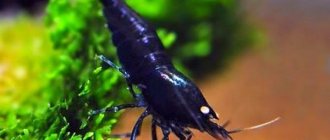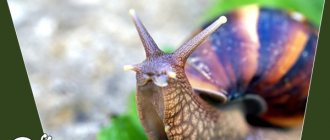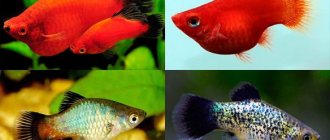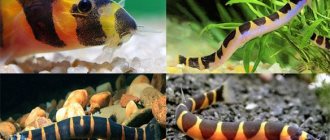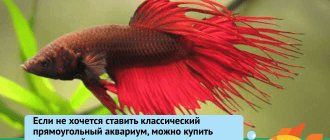The aquarium fish betta is known and popular among aquarists. This species is called betta splendes or fighting fish, it belongs to the labyrinth fish, which are of interest not only for their appearance, but also for their way of life and habits. For beginner aquarists, bettas may seem like a difficult species to keep, as they require special care. The process of reproduction and breeding requires certain knowledge, for example, how female bettas differ from males and how to spawn.
Features of the fish
The fish has interesting features that make it so popular for keeping at home:
- The volume of an aquarium for a betta can be extremely small; an individual will survive even in 1 liter of water (but it is not recommended, because the fish will feel uncomfortable).
- To raise bettas, you do not need an air generator; this species has a unique labyrinth organ that allows them to breathe atmospheric air, so this individual is suitable for keeping in the bedroom and other rooms where you do not want to hear the sound of a running compressor.
- Betta individuals perform interesting and beautiful games during the mating season.
- In order for the female and male rooster to reproduce, they need to create appropriate conditions.
The general requirements for keeping individuals include an optimal water temperature of 27 degrees, acidity from 6.5 to 7.3. Hard old water is not suitable for these fish.
Cockerel fish
Feed again
At this stage, you need to again prepare food for the fry, again preferably live - Artemia nauplii. You can buy brine shrimp eggs at a pet store or at Ptichka. I usually take a two-liter cola bottle, fill it with ¾ of water, put one and a half teaspoons of regular salt and a teaspoon of brine shrimp eggs, lower it with a spray from the compressor and place it on the aquarium rack, every other day the brine shrimp are hatched, the sprayer is turned off to collect, the crustaceans accumulate at bottom, and they are sucked in with a hose from the compressor. It is better to place 2 bottles with a difference of 2 days, then you will always have nauplii for feeding.
Teens cock
Reproduction
Breeding cockerels consists of four stages: selection of a partner, preparation for spawning, spawning itself, then raising fry. Each stage of fish reproduction is part of one complex system; bettas are capable of reproduction only in a specially created habitat, which, as a rule, is provided inside an artificial reservoir.
The ideal option for further breeding of fish is to keep individuals in a common vessel with a partition. In such an environment, the fish quickly get used to each other and are capable of further breeding. Cockerels reproduce well at a young age.
Preparing a spawning tank for cockerels
As a spawning tank, it is better to take an aquarium with a volume of 15 liters, pour 10 liters of water into it, be sure to cover it with a lid - the cockerels jump well. There should be shelter for the female, personally I use ceramic driftwood, floating plants - for me it’s usually pistia, you can add a few branches of nayas or hornwort. We put a heater in the spawning tank - the temperature should be about 26 degrees. You can place almond leaves in the spawning tank, for example - this is one of the spawning stimulants.
cockerel nest
Preparing for spawning
Aquarium bettas are bred without significant difficulties if the required conditions are provided for them. When preparing for spawning, it is important to prepare a special aquarium where the couple should be placed. The aquarium-seater must meet the requirements:
- Be voluminous, with a capacity of at least 40 liters of water.
- There should be a partition inside the vessel to keep the female rooster separate.
- The spawning nest must be suitable for housing eggs and fry, as well as floating vegetation.
- It should have a sponge filter and heating.
- For a comfortable stay of individuals, a water height of 15 centimeters is sufficient;
- The temperature inside the vessel should be between 27–28 degrees.
Matching
For selection, select individuals with the trait that you would like to consolidate.
Before breeding these fish, it is important to decide on the goals being pursued and the desired result. The approach to breeding activities and simply the desire to get offspring is somewhat different. If we are talking specifically about selection, then identifying a pair is incredibly important . But if there is no such interest and two males of different sexes live in a common aquarium, then there are few options and the choice is obvious.
Sex differences in fish are quite clearly expressed; for the most part, there are no difficulties in determining sex. The female and male, whose differences from each other appear at the age of three months, must be the same size, and preferably the same color. Females have a white egg-like formation on their bellies; in addition, they have a more faded coloring and their fins are modest. Cavaliers amaze the imagination with the brightness of their coloring, beauty and length of tails.
It should be noted that the older the male, the more amazing his fins look. This is why it is extremely difficult to determine the sex of young individuals under 10-11 weeks of age. Betta fish that have grown up to 5-6 months, but not older than one and a half years, are suitable for reproduction. In more mature fighters, the ability to bear offspring noticeably decreases, various defects and injuries appear, and mortality among fry is high.
Sexual differences in aquarium bettas.
If you plan to specifically purchase female and male cockerels for spawning, then it is advisable to do this from professional breeders. Determining the age of a fish sold in a pet store can be quite difficult. In addition, if the individuals are too young, you can buy same-sex representatives and will have to purchase more.
Once the pair has been selected, you can move on to the next step.
Spawning
The spawning time for cockerels is unusual. Before starting to spawn, the male builds a nest of air bubbles that cling to each other. The cockerel swallows oxygen, then spits it out. It is here that the caviar is subsequently located and, at first, the newborn fry of the cockerels. The size of the nest does not matter for the quality and quantity of future fry.
Initially, the male behaves aggressively and strikes the female. Further, during the ritual dance, the pregnant female rooster shows her partner imaginary eggs, provoking the male. The eggs are released as a result of the male wrapping himself around his partner. He puts pressure on her abdomen. The male picks up the discarded eggs and moves them to a previously created nest of bubbles. During this process, the female remains motionless, waiting for the male to continue spawning.
There is no specific number of fry; the older the spawning pair, the more fry the betta will have. The average number of fry is 600.
During the entire incubation period, the bubbles will burst, while the male regularly restores the nest and puts back the eggs that fall out. The process of repairing the nest can take up to 5 days until the first larvae begin to appear. At the end of spawning, the male is placed in a separate container, as he can show aggression, resulting in harm to future offspring.
Cockerels - breeding instructions. 7 steps for breeding Cockerel fish.
Many aquarium fish lovers are fond of keeping Cockerel fighting fish. These inhabitants of freshwater aquariums attract with their beauty, fin size, grace and ease of maintenance. But they are not called fighting fish for nothing. In fact, as you know, male Cockerels do not tolerate rivals on their territory (other male Cockerels or...
Many aquarium fish lovers are fond of keeping Cockerel fighting fish. These inhabitants of freshwater aquariums attract with their beauty, fin size, grace and ease of maintenance. But they are not called fighting fish for nothing. In fact, as is known, male Bettas do not tolerate rivals (other male Bettas or even females) on their territory. They easily enter into battle, after which only the winner remains alive. That is why it is sometimes not always easy to reproduce them. To successfully obtain fry, you need to know some basics of breeding Cockerels, which will be discussed below.
Step 1: Create a pair of Cockerels for spawning.
Firstly, a selected pair of Cockerels 1-2 weeks before spawning is transplanted into separate small aquariums or into one container, but at the same time separated by a partition made of mesh or glass. Throughout the entire preparation for spawning, the male and female Cockerel should see each other, therefore, if they are seated in separate aquariums, then they are placed side by side. The third option is to place the male in a spawning tank, and the female in a small transparent container, and then place this container in an aquarium with the male. This will allow the fish to see each other, but they will be separated. Read more about introducing a pair of Cockerels into a spawning shed in Step 3.
The entire time the future parents are in separate containers, they must be well fed using live and frozen food. It is also necessary to replace some of the water in containers with fresh water every day, since increased feeding along with a large amount of clean water helps the Cockerels get ready for spawning.
Such preparation for breeding Cockerels can last longer if the fish have suffered stress, for example, they have just been delivered from a store where they were kept in not very good conditions, that is, without water changes and proper feeding.
Step 2: Set up a breeding tank for your Bettas.
It is believed that the optimal volume of spawning tank for Cockerels is 30-40 liters. Yes, you can, of course, propagate them in 10l or 100l aquariums, but still for these purposes it is better to use 30-40l containers. You will also need an immersion heater (no more than 50W) with a thermostat, a sponge filter (turned off during spawning), and a lot of plants.
Both live and plastic plants can be used as plantings, but live plants are still preferable. They will keep the water cleaner while the filter is off. In addition, living plants contribute to the cultivation of ciliates, which serve as the first food for fry. It is believed that the best plants for breeding Cockerels is Java Moss, which, among other things, can serve as a shelter for a female hiding from a male.
Also, the spawning ground for Cockerels should contain other shelters, for example, flower pots with large holes.
As you probably already know, many common species of Cockerel (except those that carry eggs in the mouth) build foam nests for spawning. Males are engaged in creating the nest. They rise to the surface of the water, swallow air, mix it with saliva and release it in the form of bubbles. To make this work easier for the male, a ring of foam or plastic must be placed on the surface of the water where the nest will be. It should float on the surface of the water and prevent air bubbles from spreading throughout the spawning area.
It is also important that the upper part of the spawning tank is tightly closed with a lid, with the help of which the air above the water will remain constantly warm. This is necessary for the fry during the formation of their labyrinth organ. If they inhale cool air from the surface of the water, they may get sick and die.
Set the heater to 270C (800F) - no more, no less. To balance and stabilize the temperature, begin this process about a week before your expected spawning date. pH and water hardness are not very important. For Cockerels, the main thing is temperature.
Step 3: Introducing the pair into the breeding tank.
If the Cockerels (pair) lived in the same aquarium, but were separated by mesh or glass, then this step can be skipped. If they were kept in separate aquariums, then they must be properly introduced into the spawning tank - acclimatized. This is done only after the preparatory time has passed and steps 1 and 2 have been fully completed.
So, if the breeding Cockerels were not kept in a spawning tank before breeding, then before the start of spawning they must be properly acclimatized to the new water. To do this, the male is caught from his tank and placed in a small cup of water from his tank. Then the cup is kept in the spawning aquarium for half an hour (after the first fifteen minutes, it is necessary to drain half of the water from the cup, replacing it with water from the spawning tank). This will allow the Cockerel to painlessly get used to the new temperature and other water parameters. At the end of half an hour the male is released from the cup. Immediately after this, the female is released into the spawning area in the same way, after making sure that during her acclimatization the male will not get into her cup and will not be able to harm her. When half an hour has passed, place her in a glass tank (located inside the spawning tank) where she will remain until she is released to spawn.
Step 4: Freeing the female Cockerel.
Releasing a female Betta from a glass tank or removing the partition between the fish should not be done early, as this may cause unnecessary harm. At this stage you should be patient. Know that there are four main signs that will help determine if a female Betta is ready to spawn:
- The female, as soon as she is ready to spawn, will cease to be afraid of the male, will be more inclined to swim with him and will even begin to fluff her fins.
- Look at the female's belly - it contains eggs, but during preparation for spawning, the belly enlarges and becomes simply huge. A female that is ready to breed will look like she has swallowed a balloon.
- The female will have vertical stripes on her body, indicating her readiness to spawn (horizontal stripes are associated with fear or stress). This sign is not the most accurate, since Pastel and Matte females do not show any stripes. It should only be used in combination with points 1 and 4.
- The last sign indicating that the female is ready to spawn is that she begins to pinch her fins and swims, leaning forward.
Step 5: Spawning of Cockerels.
As soon as the female begins to show three or all of the signs indicating her readiness to spawn, she must be carefully removed from the container and placed in a spawning tank away from the male (or the partition must be removed). She will begin to swim and when the male sees her, he will open his fins and gill covers and begin to chase her throughout the aquarium. At the same time, there will be pinching of the fins, but don’t worry - this is normal. It's not very pleasant, but it's nature! At this time, the male should already have a well-built, strong nest. If not, don’t worry, males can lay eggs and protect them and the fry even without a single bubble. The female will periodically swim out of the shelter to inspect the nest. If the female doesn’t really like it, she will peck at the nest and jump on it to destroy it. The male will then chase her, and after she hides, he will resume construction again.
One day the time will come when the female Cockerel approves of the nest, she will swim out of the shelter head down, as if dancing, and approach the bottom of the nest. Manufacturers will begin to literally hug each other. The male will squeeze the female with his body and, writhing and writhing, turn her upside down. He will tense up and look almost lifeless. The moment the female releases her eggs, the male will release sperm. Such hugs last from 10 to 20 seconds. The male then collects the eggs, applies saliva to them, and spits them into the nest.
Spawning of Cockerels lasts from 1 to 3 hours, and sometimes longer. The male will then begin to chase the female, which means it is time to remove her. Sometimes it happens that the fish do not spawn on the first day. If this happens to you, then at night you will have to return the female back to her container (or fence off with a partition).
Reproduction of Cockerels - video.
Step 6: Eggs, fry and male responsibilities.
When spawning is completed and the female is safely removed, the male will begin to guard the nest and all eggs (he will return the eggs that have fallen from the nest). At night, it is necessary to leave the lighting of the spawning area on (or turned on nearby) so that dad can see the eggs that may fall out at night.
After two or three days the fry will hatch and the tiny (very small!) bettas can be seen hanging from the nest. From this time on, the male’s task will become more difficult, as the fry will sway and fall out of the nest more often, and the male will have to quickly return them. After two or three or more days, the fry will begin to swim horizontally on their own. This means that the male can also be removed from the spawning area. This concludes his work.
Step 7: Feeding the Cockerel fry.
Once the fry begin to swim freely, they will need to be well fed with tiny foods. Bettas usually do not eat for the first five or six days after hatching, but after that they should be fed live food (such as brine shrimp nauplii) and small flakes or pellets. They are also given an egg yolk either hard-boiled, or food based on it, for example, etc. In addition, microworms and vinegar nematodes are excellent for them.
From now on, you can lightly run the filter in the aquarium. For successful feeding, fry need a water temperature of 26-270C (800F). The lid of the spawning tank must be closed, since heat is of great importance for the proper development of the fry. Water changes can begin two weeks after the fry begin to swim freely and are strong enough to swim away from the siphon. Such care must be carried out for two to three months, until young males begin to show their characteristics (fins lengthen and aggression begins to increase). When the fish are 3-4 months old, they begin to be fed frozen and pelleted food.
All the steps described above are necessary to properly feed the fry. Breeding Cockerels (preparing for spawning, spawning itself and feeding the young) may look complicated, but once you learn how to do it, you will realize that it is a lot of fun and enjoyable.
Caring for fry
Betta fry require careful care as they are not known for their survival rate. The food should be prepared a week before the fry appear.
Cockerel fry
For food you will need:
- Ciliates.
- Vinegar eel.
- Artemia.
After two weeks, you need to add a microworm and chopped tubifex to the food. In addition to a properly formulated diet, it is necessary to create comfortable conditions for the development of young animals:
- The aquarium must be equipped with a compressor, since until the age of 20 days, the young animals have not yet formed a respiratory organ;
- The water temperature must be gradually reduced to 22 degrees;
- It is important to perform water changes daily.
As soon as the young animals reach the age of 3 weeks, they must be moved to a spacious aquarium. When the bettas are 3 months old, the betta fish can be distinguished by sex and prepared for spawning again.
Preparing starter feed for feeding fry
It is necessary to stock up on food at this stage, since it is better to feed the fry with live food. Since the fry of cockerels are small, they eat ciliates first. So, take a jar, preferably three liters, siphon the soil in your aquarium and pour this water into the jar - there are always ciliates in an old aquarium! Add some dead parts of plants, a teaspoon of milk, a 1 by 1 cm piece of dry banana peel and place the jar in a bright place. At first the water becomes cloudy, then it brightens and clouds of ciliates are visible even to the naked eye. It is convenient to select them using a hose from the compressor.
Female blue crown-tailed cockerel, with eggs
Nutrition
It is good to feed cockerels with live food: bloodworms, tubifex, chopped earthworms, brine shrimp. They also eat flakes and freeze-dried food, especially specialized food for bettas. Different brands have separate lines of food that support the color of bettas. Do not overfeed the fish. Betas are not very active fish and like to hang in place for a long time, which significantly saves them energy. If the cockerel lives alone, then you should feed it in very small portions, making sure that he eats everything. If the food falls to the bottom, it means the fish is full and you should take a break from feeding for 1-2 days. This will only improve your pet's health.
What to feed the fry
If the spawning of betta fish was perfectly successful, you should not be sure that you have become the owner of a brood of juveniles. This is just the beginning!
Here you need to provide the fish with special feeding - chopped tubifex, frozen bloodworms or dried gammarus will not suit them. At a minimum, you should use an egg yolk. After hard-boiling an egg, take a little bit (literally on the tip of a knife) and dilute it in water to obtain a cloudy liquid. Add it to the spawning tank literally a few drops at a time - the nutritious yolk will provide the fry with everything they need. The main thing is to remember to feed more often, literally every 3-4 hours.
But the best choice would be Artemia nauplii. Yes, removing them is quite troublesome, and it will take more than one day. But the juveniles, receiving live food in sufficient quantities, will grow quite quickly, distinguished by excellent health and bright colors. Therefore, it is definitely worth spending extra time on breeding live food.
Care and maintenance
After spawning, the female is immediately removed to another aquarium so that the male does not kill her. The male is left in the spawning area, where he will care for future offspring. The cockerel fans and removes unfertilized eggs and straightens the nest. During this period, there is no need to feed the male; he has enough dead eggs and microorganisms from water and plants.
The male is removed from the spawning ground only after the eggs hatch. This happens on day 3-4. At first, the fry of the bettas remain motionless, so the filter must be turned off. During this period, it is important to set up round-the-clock lighting, but the lamp should be no more than 0.4 watts.
When the juveniles begin to swim on their own, you can turn on the filter. During this period, ciliates are introduced into the diet of the fry. You need to monitor the fry so that food for small fish is always floating in the aquarium. There is no need to change water in the first days of life.
During the first seven days, you need to gradually lower the temperature, bringing it to room temperature. In the first week, you can gradually introduce a new food: artemia. The diet is expanding, the fry of cockerels now regularly receive ciliates and artemia. After another two weeks they begin to produce cyclops, microplankton, and tubifex. Live food is given to grown fry once every two to three days, and dry food is given daily.
Large fry need to be separated from small representatives, since large fish can eat smaller individuals. If fights start in the tank, the males need to be placed in separate tanks.
Closer to three months, the fish become similar in color to adult individuals. During this period, it is already possible to understand where the males are and where the females are.
Breeding bettas at home is a troublesome task, but it makes it possible to get new, beautiful fish. Many people raise and breed bettas for sale, as these aquarium fish are extremely popular. In order for breeding of cockerels to bear fruit, you need to create the right conditions and carefully monitor the behavior of adults, and then the fry. This will take a lot of time, but will give good results.
Choosing a spawning ground
Let's start with the fact that the aquarium where the betta fish will spawn should not be large. Fifteen liters will be more than enough. But even it does not need to be filled completely with water - it is better to limit it to 12-15 centimeters. The fact is that the female will lay eggs, which will sink to the bottom. The male carefully collects it and attaches it to floating objects - usually algae. Therefore, a small amount of water can make a parent's life easier.
If the aquarium has not been used before, it should be thoroughly washed. You can use a solution of potassium permanganate.
Make sure that the spawning area has shelter for the female. The male betta is extremely emotional during spawning, so he can cause serious damage to her. Thick algae, driftwood, or a fragment of a ceramic jug can be used as shelter.
Remember to keep objects floating on the surface of the water. A suitable algae, such as pistia, is a better choice. But you can also use a piece of foam.
Do not forget that during spawning fish need a large amount of oxygen. This is especially true in the summer heat, when the oxygen content in the water decreases. Install a small compressor to saturate the water with air.
How to distinguish a female from a male?
The breeding process will be successful if the aquarist knows exactly the main sexual differences between male and female specimens. Keep in mind that the male’s color is brighter only when optimal housing conditions are created and proper nutrition is provided.
The main sexual differences between cockerels are the following:
- The male has a brighter, richer and more elegant color. But in a female, if she has recently been transplanted into a new aquarium and has experienced severe stress, the color becomes bright, and it is almost impossible to distinguish her from the male.
- In males, the fins are larger, outwardly resembling a real sail - this feature appears at the age of about six months, and the older the male, the brighter this feature.
It is possible to accurately determine the sex of a fish no earlier than three months of age.
Here comes the replenishment!
The eggs will not last long in the aquarium. In just a day they will turn into larvae. They swim with great difficulty, and they don’t look too much like adult fish. In another day or two, the yolk sac that provided them with nutrition will dissolve, and the fry will be able to swim more smoothly and confidently.
By this time the male can be removed. It fulfilled its function - it protected the fry from a potential threat, and at the same time removed dead eggs so that they would not harm the fry.
How to determine gender
The process of breeding betta fish begins with the selection of a pair. Matching begins with determining gender differences. It is not difficult to distinguish a female from a male. Sex differences appear as early as 3-4 months of age.
The male cockerel has an expressive color, and the fins are much larger. The fins look like large sails.
For reproduction, males and females will be needed from 5 to 18 months. After 18 months, males often have reproductive problems. "Old-born" males often develop fish with external defects or structural abnormalities, which leads to the death of the offspring.
Behavior and neighbors for cockerels
Bettas, also known as Siamese fighting cocks, have become popular among fish enthusiasts primarily because of the males' beautiful colors and gorgeous fins. Several females can be placed in an aquarium with peaceful fish, the main thing is that there are no fin pluckers among the neighbors; some characins and barbs can leave the bettas plucked and in a state of stress.
They are slow, and in a community of large, mobile fish they spend most of their time in shelters. It is best kept in a small species aquarium. If several males get into the aquarium, they will start constant fights, which will most likely end in the death of the weak ones. There are relatively peaceful species, the males of which do not cause serious injury to each other. However, “cockerels” are very peaceful with other fish: small characins, peaceful barbs, and viviparous fish.
Only one male can live in one aquarium; peaceful neighbors are also suitable for them as neighbors: corydoras, loaches, zebrafish, tetras, non-aggressive and small barbs. Otherwise, the males will attack each other, the stronger one will chase the weaker one, tear off the fins and, most likely, kill the opponent.
How often can cockerels spawn?
The intervals between spawning must be determined based on a large number of factors. It is important to use an individual approach in each individual case. Some females collect eggs slowly, others quickly. Some fish may not be able to get rid of eggs without outside help. Therefore, the question of how to find out when a female betta is ready to spawn is very difficult. Spawning is necessary only when the fish has a significant “belly”, which is clearly visible even before feeding begins.
The requirements for spawning on the part of the male are not so stringent. There are no exact rules in this matter. But there is no need to spawn more than once every two weeks. Otherwise, the male may become exhausted.
Possible problems and benefits
Breeding bettas is a very exciting activity. First of all, it is important to decide whether this is just a hobby, or whether you want to breed a new genetic line of fish. When optimal conditions are created, this species reproduces easily, and such an activity can become a profitable business.
If you plan to sell cockerels, strictly monitor the purity of the species. The biggest problem is the rapid reproduction of fish. If you don’t set up a sales line in time, there are so many fry that there is simply nowhere to keep them.
With proper care and optimal conditions, one pair can produce offspring once every 14-20 days. Even if some of the fry die and culling is carried out after spawning, about 200-400 young individuals remain. Take this fact into account if you do not plan to sell the fish.
It doesn’t matter for what purpose the breeding of aquarium bettas is carried out - it is always a fascinating spectacle. Caring for fish is simple; all you need to do is create the right conditions, feed them properly and keep the aquarium clean.
Conditions for keeping a cockerel
Although these fish can live for a long time in small volumes of water, for a comfortable and healthy life they need containers of 20 liters only for a betta, without taking into account neighbors. This type of aquarium fish loves clean water, so frequent water changes are necessary. It’s good to pick up a small piece of driftwood for such an aquarium - a piece of driftwood made from mangrove wood sinks quickly and is convenient to use. Of course, it colors the water, but the rooster really likes it, since the driftwood releases humic substances into the water, and the rooster loves this kind of water.
There is a misconception that a betta can be kept in very small quantities!
Only professionals can keep fish in small containers, and even then not for long. Yes, the fish does not use oxygen from the water, but in all other respects it is the same fish. And the most common mistake of novice aquarists is to put a cockerel in a bare five-liter round aquarium, completely change its water once a week or a week and a half, and thereby expose the fish to constant stress!



